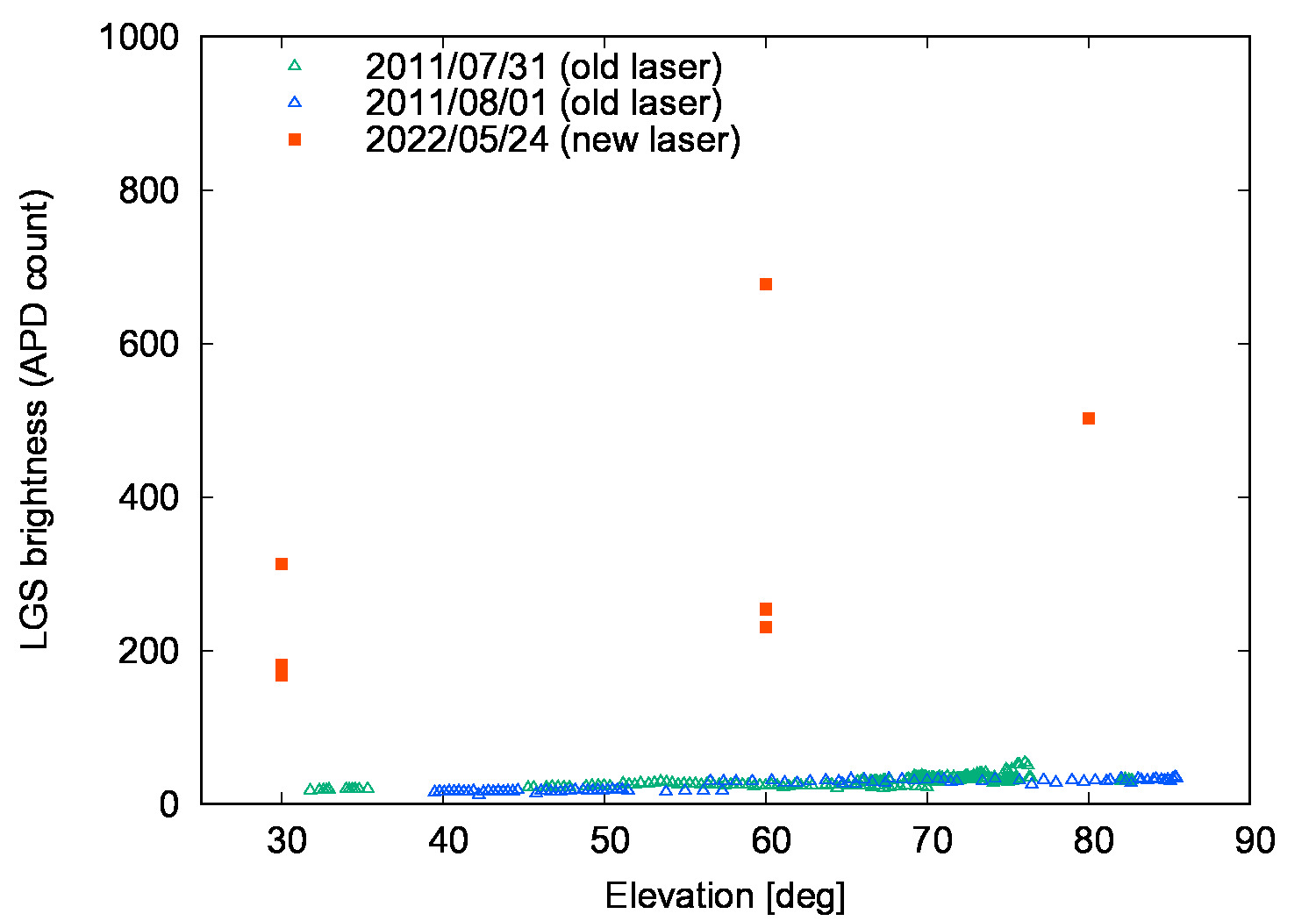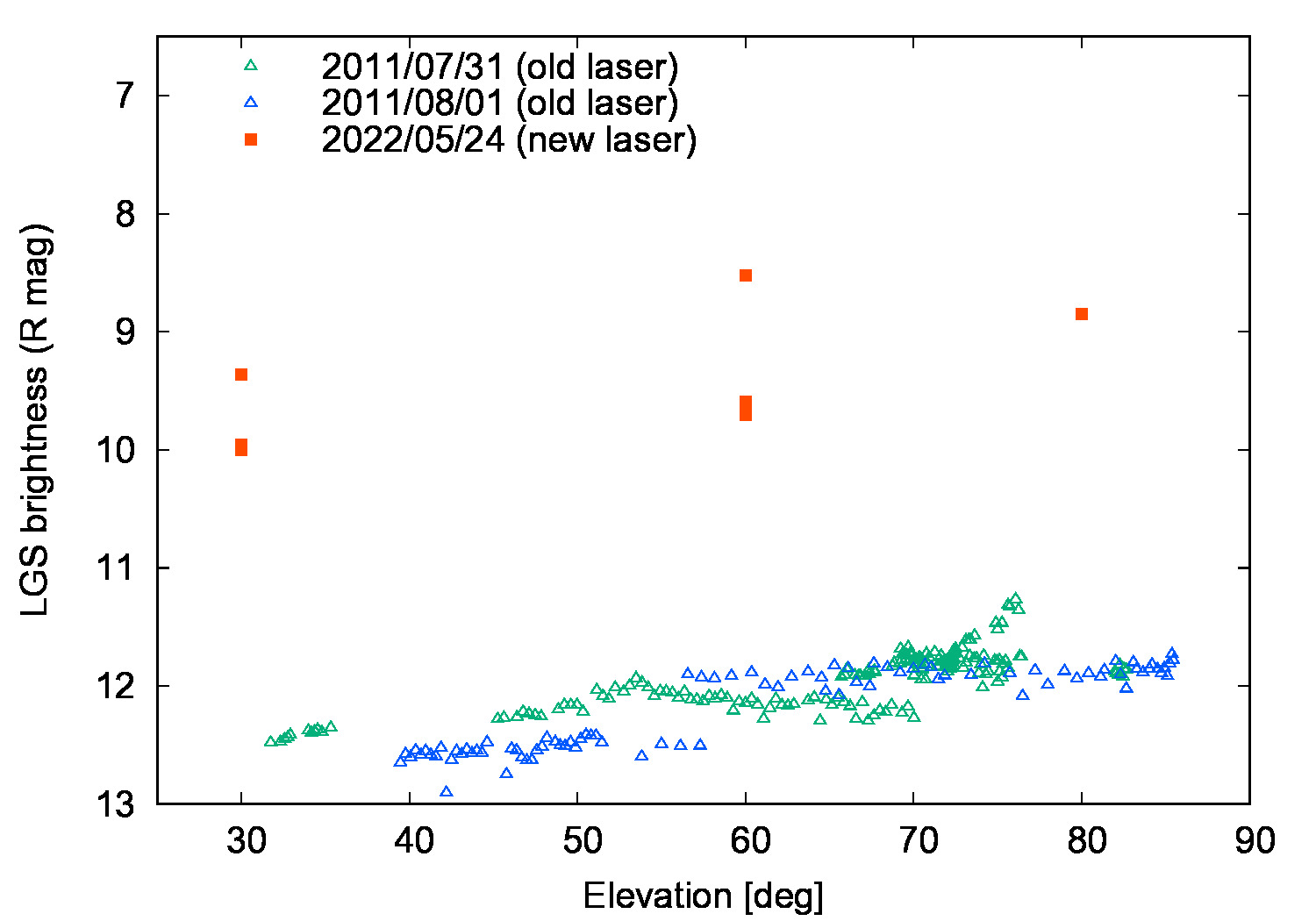AO188
Information for S26A applicants
Before preparing the proposal, please read Planning Observations very carefully.
-
Upgrade of deformable mirror (DM)
The DM of the AO188 has been updated to a 3228-actuator magnetic mirror. Please read the Introduction section below carefully for the available observation modes. For more information, see below and refer to the new DM web page.
-
An increase in thermal background up to a factor of 2 in K- and L-bands of IRCS was found after the new DM installation. The reason for this is currently under investigation.
-
Near-Infrared wavefront sensor for AO3k mode (Shared-risk)
The near-infrared wavefront sensor (NIR WFS) using AO3k mode is open in shared risk mode, only for limited modes with IRCS and SCExAO (CHARIS, VAMPIRES, and REACH). Please refer to the NIR WFS website and the IRCS webpage for more information. Users planning to submit a proposal MUST contact Dr. Julien Lozi (lozi_at_naoj.org; the PI of the NIR WFS) and include him in the proposal as a Co-I.
-
LGS mode operating with TBAD
The new laser guide star (LGS) system for AO188 is operated with TBAD (Transponder Based Aircraft Detector). Please carefully read the following webpage for additional information of the new laser system.
LGS mode is now experiencing a performance issue after DM3k installation. The observatory is working to solve this issue, but please understand that there is a risk of limited performance with LGS mode. Please prepare for the NGS mode observation as a backup for when LGS performance issues are still standing.
-
If the following conditions apply to you, please contact the primary support astronomer in advance:
- Those who intend to use the LGS mode for the first time
- Those who want to observe with non-sidereal objects using the atmospheric dispersion corrector
Introduction
AO188 is installed at the IR Nasmyth platform of Subaru telescope. AO188 has various modes used by several instruments as below.
| NGS-AO188 mode | This observation mode uses 188 photon counting APDs for wavefront sensing. The available instruments are: See the instructions described on this webpage for more details. |
| LGS-AO188 mode | This observation mode uses 188 photon counting APDs for wavefront sensing, combined with the laser guide star system. The available instruments are: See the instructions described on this webpage for more details. |
| NIR WFS-AO3k mode | The newly installed 3228 actuator DM is used with near-infrared wavefront sensor (NIR WFS) for this mode to conduct high performance correction in near-infrared. The available instruments are: The information described on this webpage is for NGS-AO188 mode and LGS-AO188 mode. Please check the webpages dedicated for NIR WFS-AO3k mode (listed below) and instrument website for detailed information for NIR WFS. |
NGS and LGS with 188-element WFS (AO188 mode)
Note:
Although the deformable mirror (DM) has been upgraded to a 3228-actuator DM in May 2024, the performance of NGS and LGS modes remains the same as before, because the visible wavefront sensing is limited to AO188 mode.
AO188 in the NGS mode has been offered for open-use observations since S08B. The NGS mode requires a bright star within 30 arcsec from the science target. If your target itself is bright enough and not very extended, you can use it as a NGS. To obtain reasonable performance improvement, the NGS should be brighter than R magnitude of 16.5. Diffraction-limited spatial resolution can be achieved at KLM-band with a sufficiently bright guide star at good observing conditions. At shorter wavelength (zJH band), high spatial resolution comparable to or even higher than the K-band diffraction-limit resolution can be achieved. The maximum Strehl ratio so far achieved at K-band is 0.55 at a 0.5'' seeing condition.
LGS mode uses an artificial sodium laser guide star for high-order wavefront correction. Because an artificial guide star can be created close to or on top of the science target, better AO correction is expected using the LGS than a far away NGS. Our LGS mode was first opened to public at the latter half of S11A semester. However, the brightness of the LGS degraded from R=10.5 (in 2011) to R=14 at EL=80 degree in January 2019. Due to this degradation, it was decided to upgrade the laser system.
The new laser system is based on the TOPTICA laser and the optics are composed of mirrors, which provides the LGS with the brightness of 8.5 -- 10.0 mag in R-band (see figure below). The bright LGS will increase the stability of the LGS mode observations. The performance of the AO will be comparable to the old system since it depends on the ability of AO188. Please see the Performance page for the details.
|
|
The information below are for NGS/LGS with AO188 mode. See NIR WFS-AO3k mode website for information on NIR WFS-AO3k observations.
Instrument citation
Please cite the following papers when you refer to AO188 in your publication.
-
"Commisioning status of Subaru laser guide sta adaptive optics system"
Hayano et al. 2010, Proc. SPIE, vol. 7736, 21 -
"Current status of the laser guide star adaptive optics system for Subaru Telescope"
Hayano et al. 2008, Proc. SPIE, vol. 7015, 25
Contacts
Questions regarding this page should be directed to the support astronomer (Vera Maria Passegger, vmpas__at__naoj.org).
Please note that all numbers on these pages are subject to change as the performance of AO188 is better determined.
Note: Previous AO36 system has been decommissioned since S08B semester and is no longer available. If you need the information of AO36, please see old AO page.

